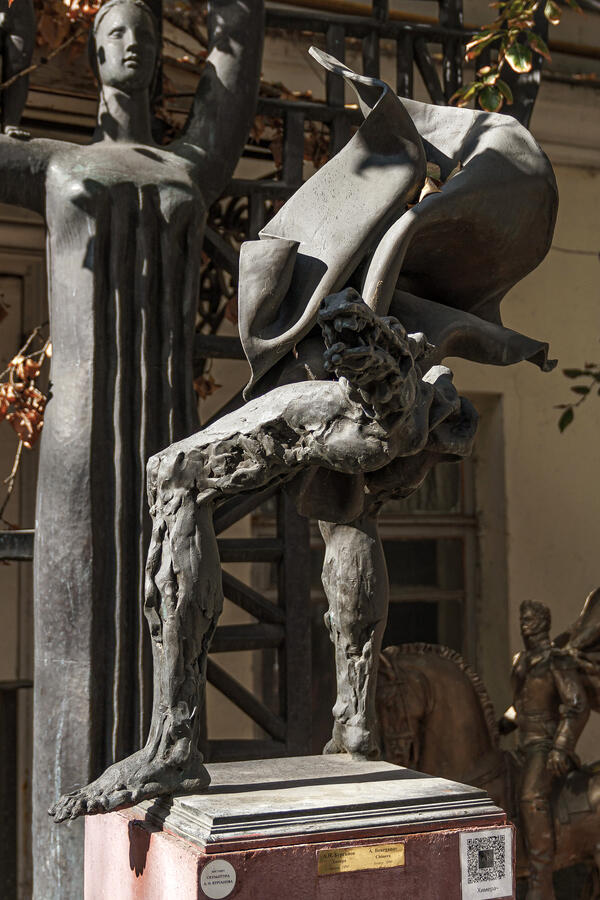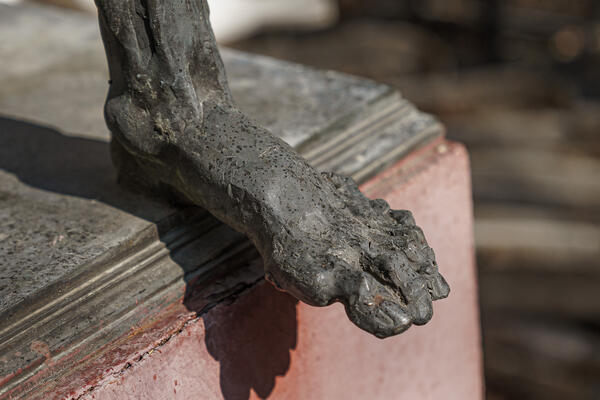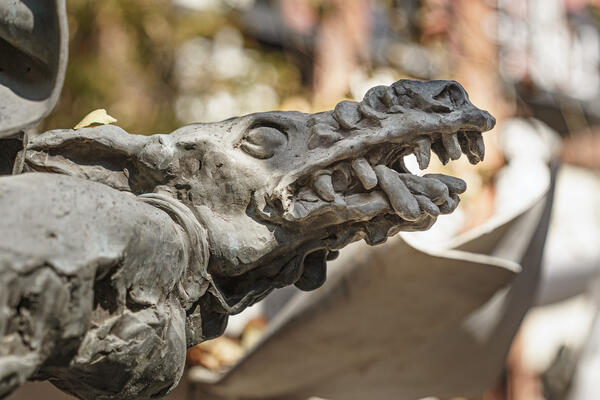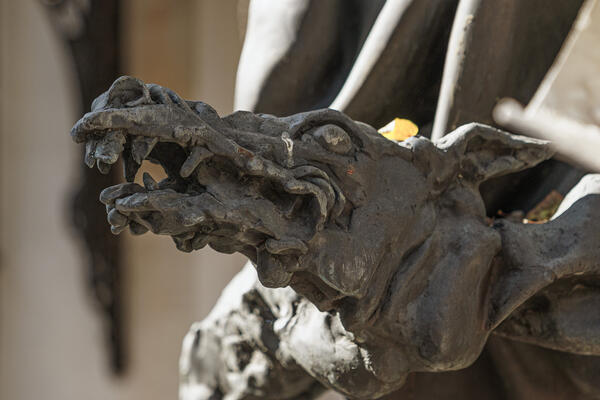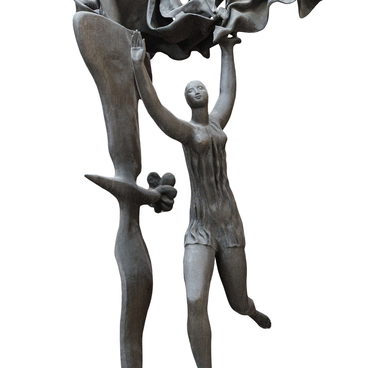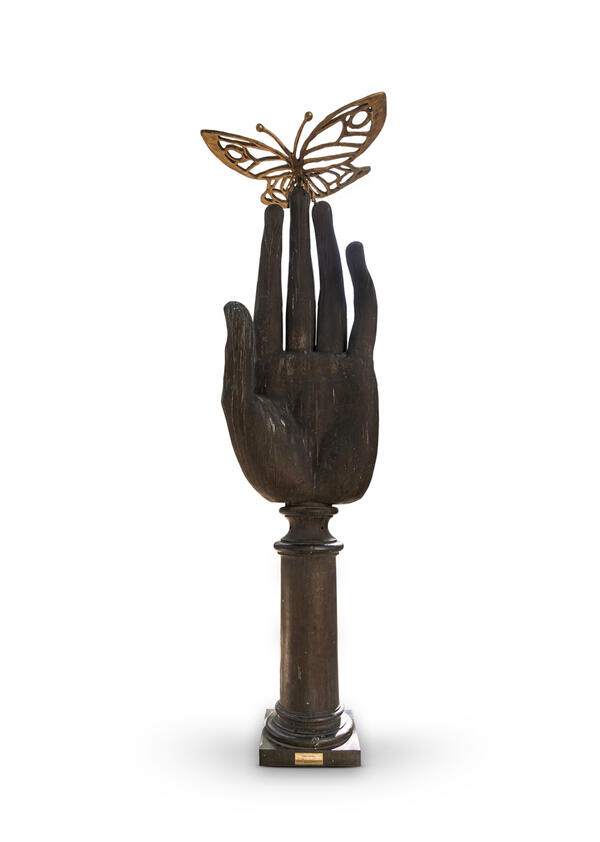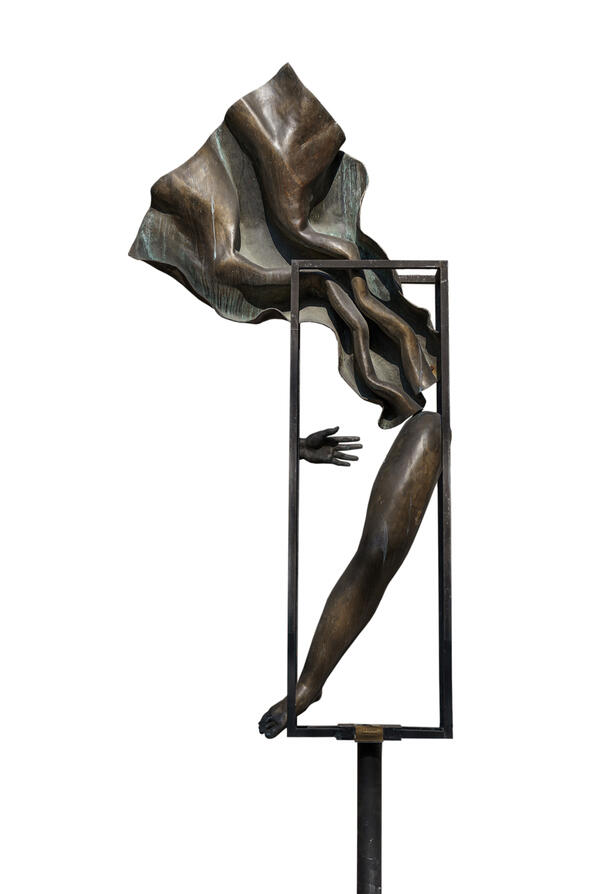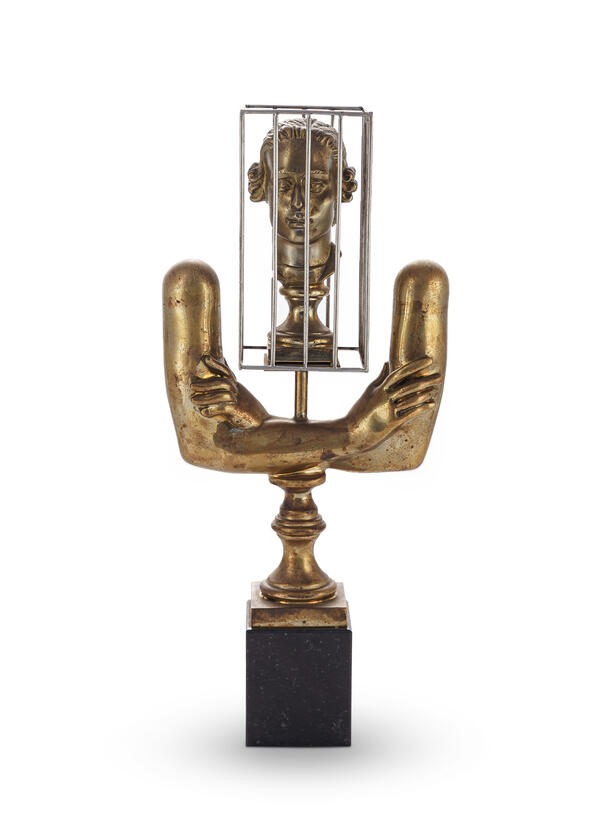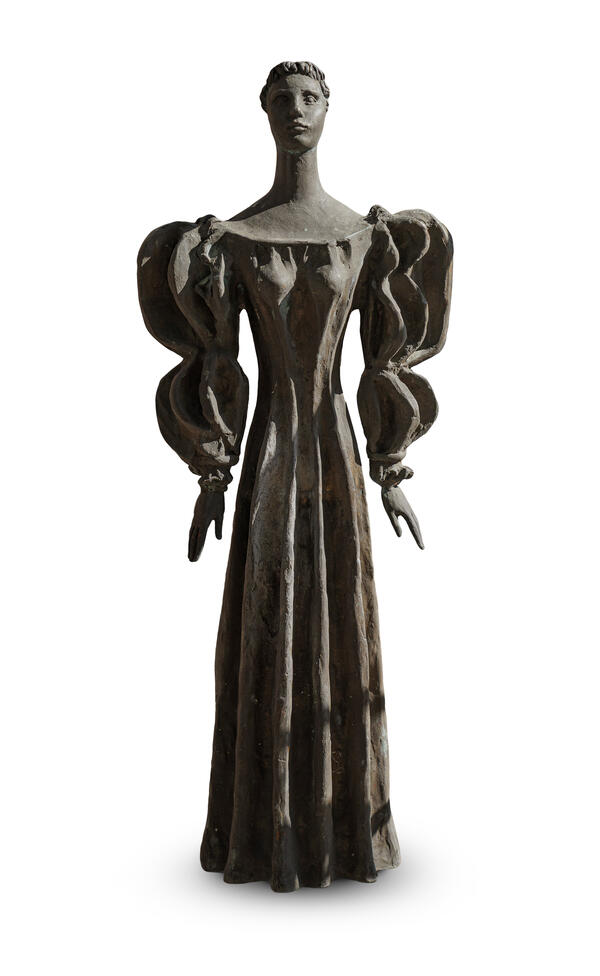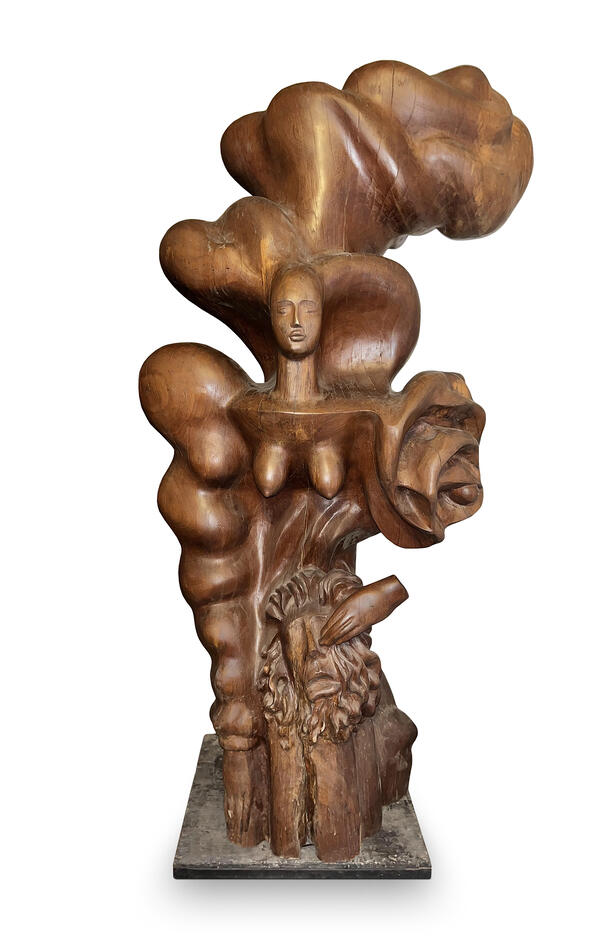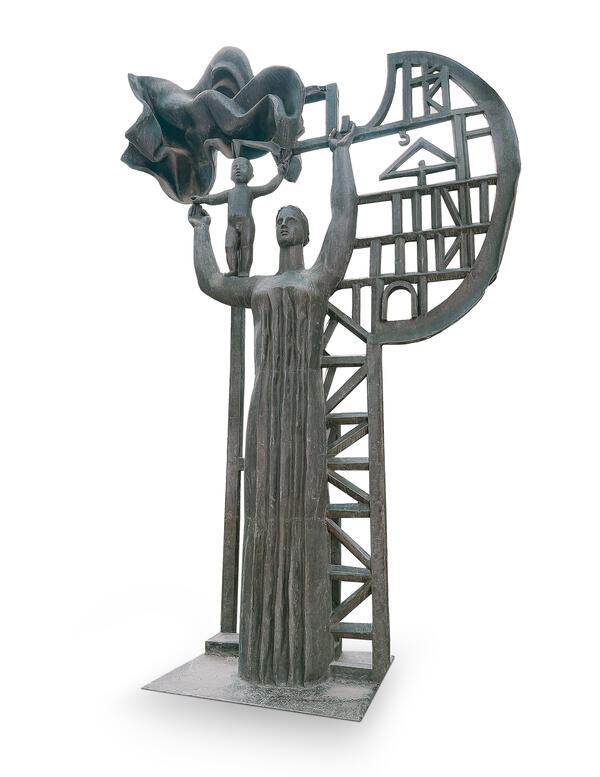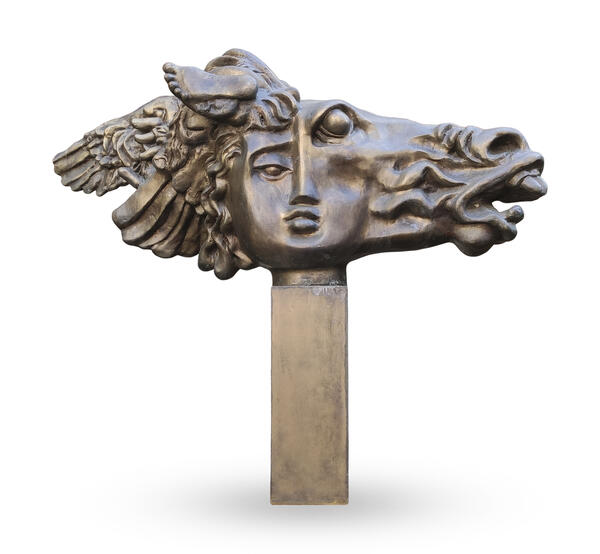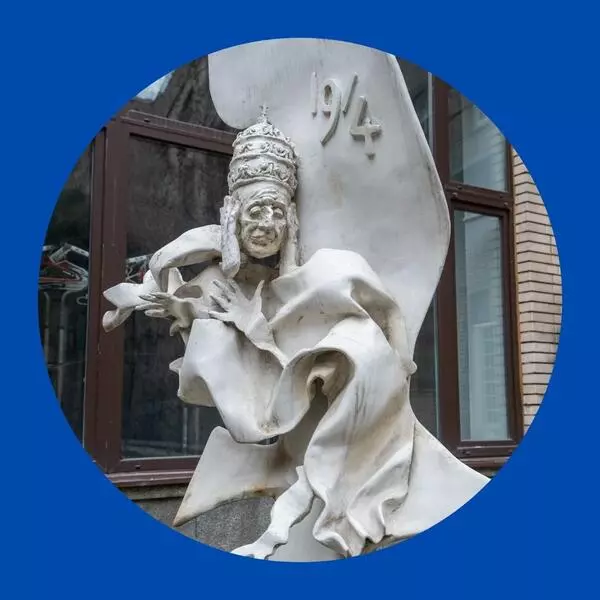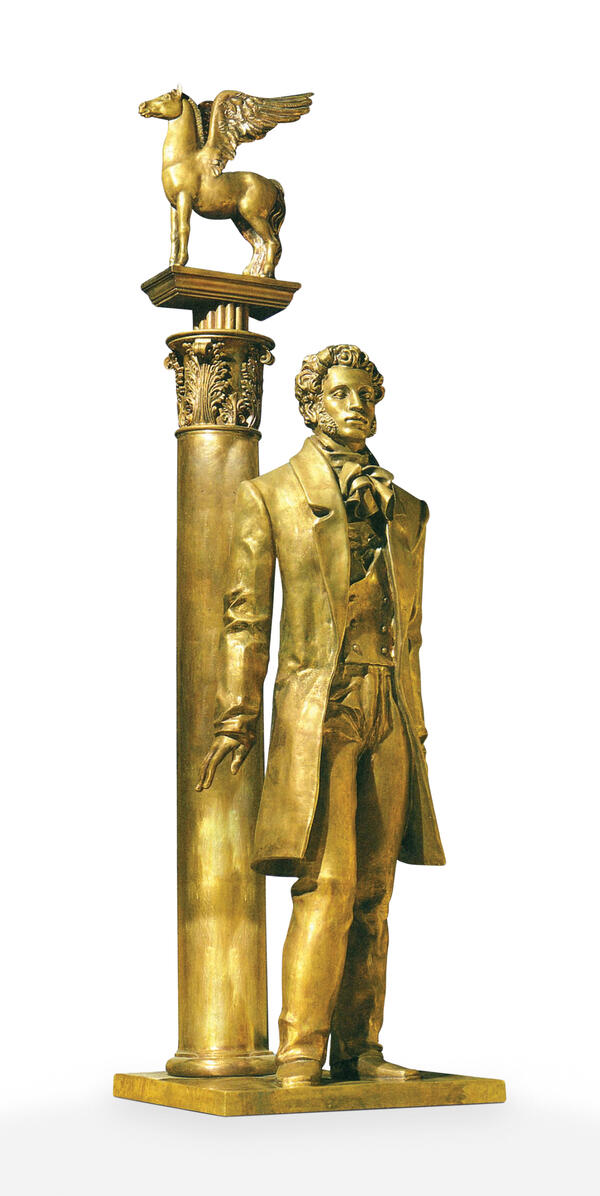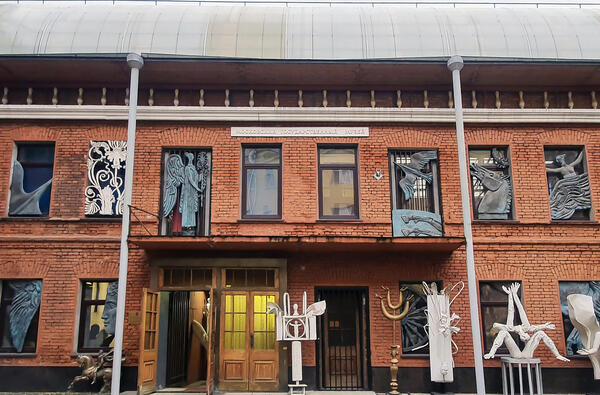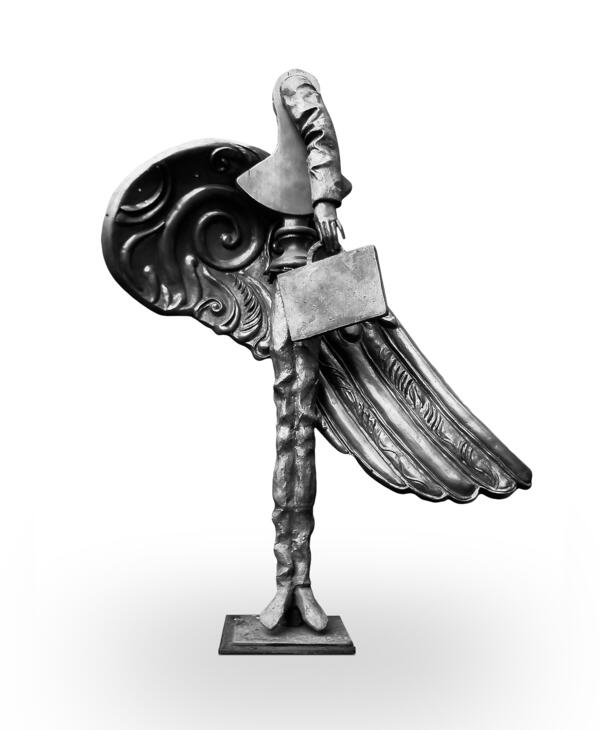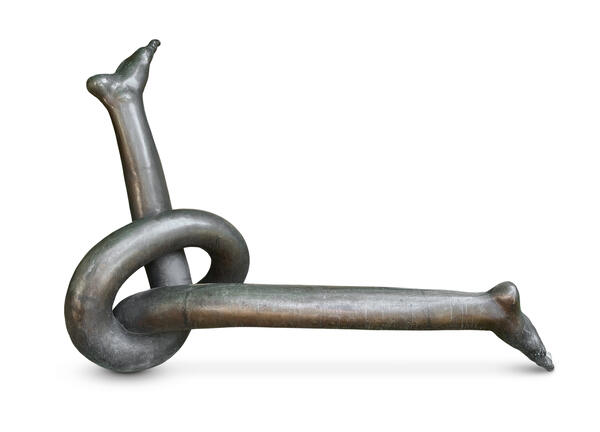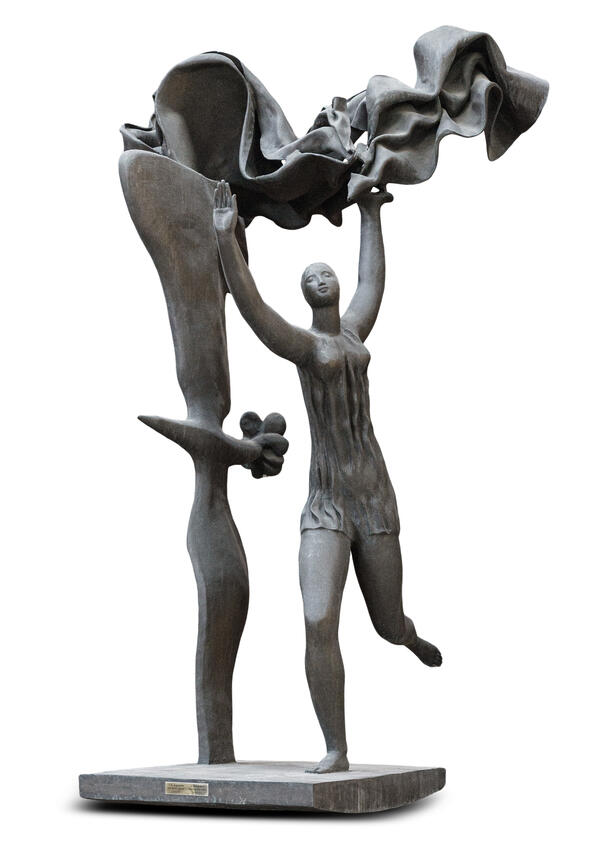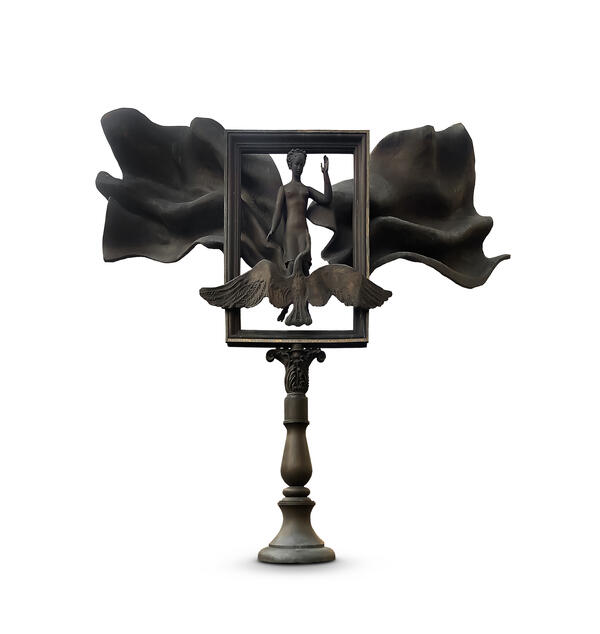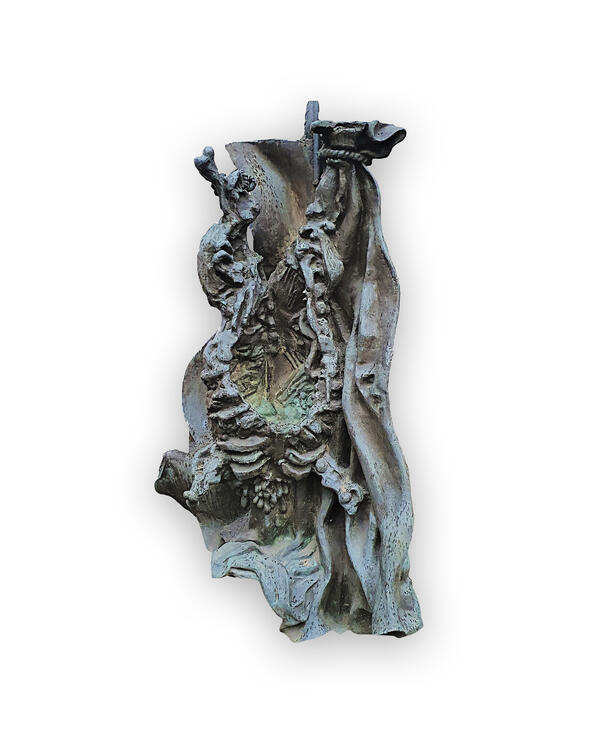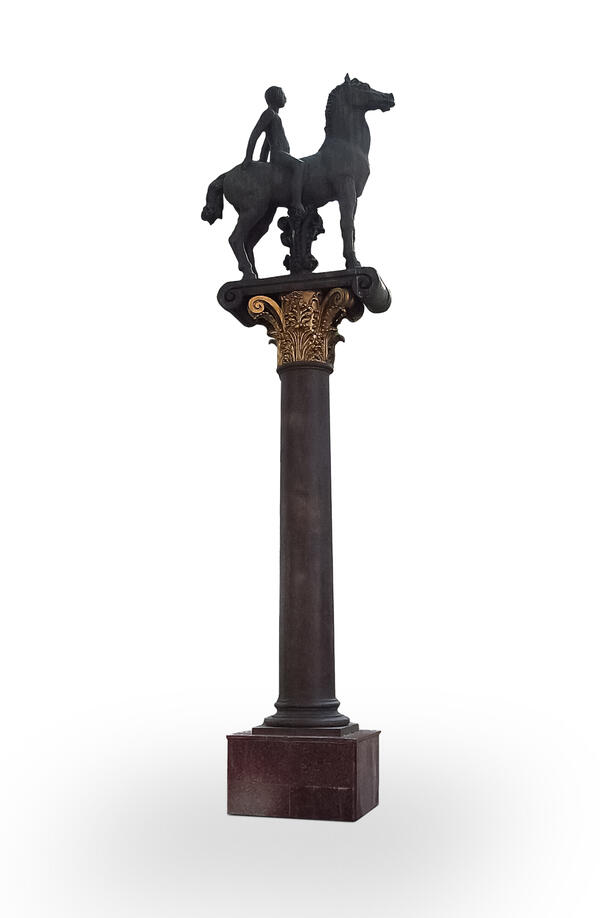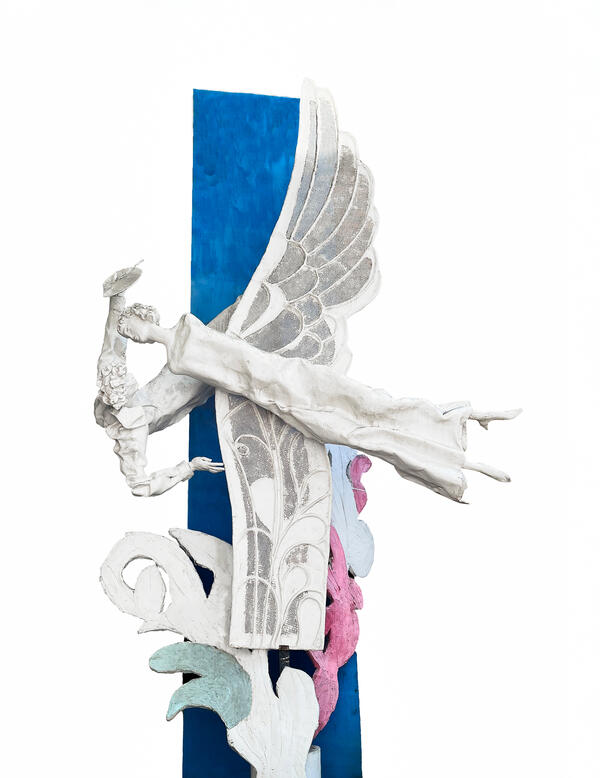In the Small Courtyard of the museum, visitors are welcomed by a fantastic creature. This piece of art is supposed to be viewed from different angles. The first thing that a visitor sees is a monstrous creature showing its teeth and looking forward. However, by walking around the sculpture, one can discover that it is actually a human being, hidden behind the monster. This is one of Alexander Burganov’s mysterious sculptures, inviting visitors to think about the fluidity and inconsistency of life, and leading them into a world of fantasy and dreams.
The chimera is a monstrous mythological creature of divine origin that was first mentioned in the Iliad by Homer. The chimera breathed fire and was believed to be immortal. It had the head of a lion, the body of a goat, and the tail of a snake. In ancient cultures, seeing a chimera was considered a bad omen, a sign of impending danger and deception.
Over time, the chimera became a symbol of everything chimeric — the impossible, incongruous, and false.
In the Middle Ages, sculptures of chimeras (also known as grotesques and gargoyles) were placed on Gothic cathedrals, embodying evil and vices.

